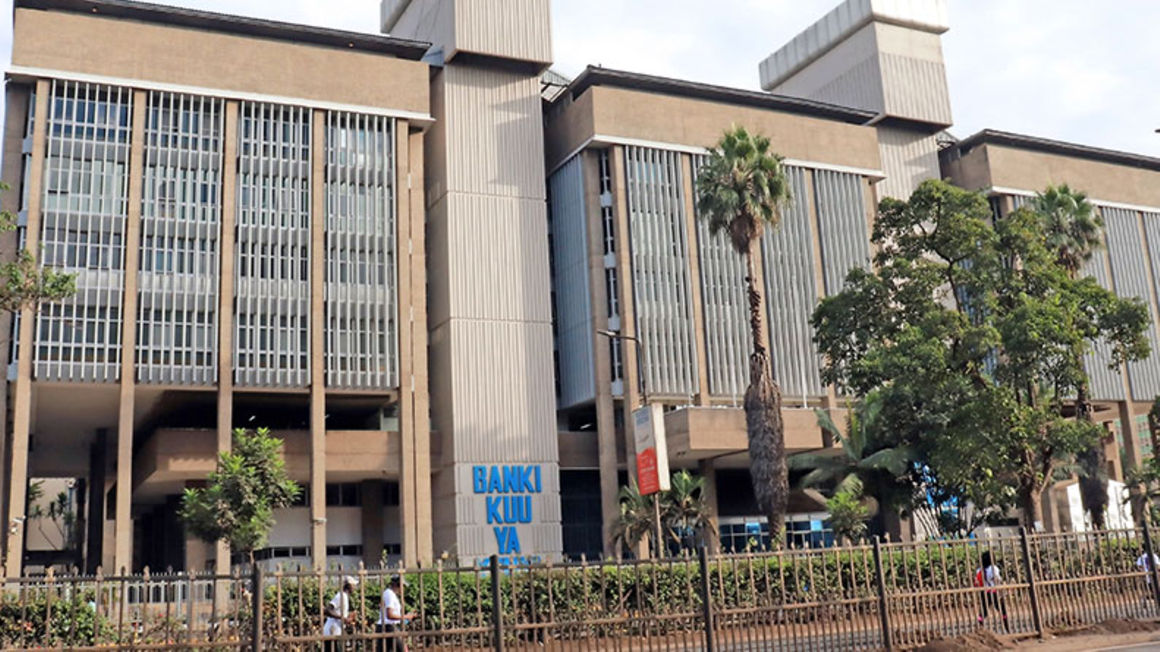
Central Bank of Kenya. FILE PHOTO | NMG
Summary
- Last year, the economy contracted by 5.7 per cent and 1.1 per cent in the second and third quarters respectively, with business activity slowing down, thousands losing their jobs and schools remaining closed due to the pandemic.
- This hurt the quality of banking sector assets, with non-performing loans jumping to 14.1 per cent by the end of December 2020 from 12 per cent in 2019, leading to higher provisioning that ate into profitability.
- The lenders largely recorded falls in profits in the second and fourth quarters of the year, which the CBK attributed to income growing at a slower pace compared to expenses.
Kenyan banks took a Sh46 billion hit on their profits last year, hurt by a sharp rise in bad loans and costs in an economy that was battered by Covid-19 pandemic-related woes.
The pre-tax profit for the 39 lenders fell by a third to an eight-year low of Sh112.8 billion in 2020, the Central Bank of Kenya’s credit survey report for the fourth quarter of 2020 shows. This marked a significant slump from the record Sh159.1 billion profit the lenders posted in 2019.
The last time the sector’s profits were this low was in 2012 (Sh107.9 billion), with the past decade largely characterised by rapid growth in profitability before the Covid-19-led speed bump last year.
Due to their role of financial intermediation, banks’ fortunes tend to be closely linked to the country’s overall economic performance.
Last year, the economy contracted by 5.7 per cent and 1.1 per cent in the second and third quarters respectively, with business activity slowing down, thousands losing their jobs and schools remaining closed due to the pandemic.
This hurt the quality of banking sector assets, with non-performing loans jumping to 14.1 per cent by the end of December 2020 from 12 per cent in 2019, leading to higher provisioning that ate into profitability.
The lenders largely recorded falls in profits in the second and fourth quarters of the year, which the CBK attributed to income growing at a slower pace compared to expenses.
“This was as a result of a higher increase in expenses (10.42 per cent) as compared to increase in income (4.44 per cent). Return on Assets decreased to 1.64 per cent in December 2020 from 1.76 per cent in September 2020,” said the CBK in its credit survey report for the last quarter of the year.
Banks also saw a loss of non-funded income due to measures implemented by the government to cushion customers from the negative effects of the pandemic.
Key among them was the removal of charges on cash transfers between bank accounts and mobile money wallets in March, which remains in force to date.
This was meant to discourage use of hard cash in transactions, in order to minimise the chances of spreading the coronavirus through contaminated banknotes.
The reduced demand for loans also reduced the amount of processing fees banks earned, while the reduced visits to ATMs also ate into non-funded income.
As a result, in the nine months to September, tier one banks saw their non-interest income rise by only 1.5 per cent compared to a 16.2 per cent growth in the corresponding period in 2019.
The biggest concern, however, remained the elevated credit risk, with the absolute value of defaulted loans rising to Sh423 billion or 14.1 per cent of the total Sh3 trillion loan book in December, compared to Sh333.24 billion that was in default in December 2019.
The stock of non-performing loans (NPLs) rose even as banks allowed customers to extend repayment periods on loans worth Sh1.63 trillion by end of December, an equivalent of 54.2 per cent of total loan book.
Their income has also been hurt by the cautious approach to lending due to the elevated risk of defaults.
Credit growth
By the end of December, the banking sector liquidity had climbed to 54.55 per cent, compared to 49.7 per cent in December 2019, while 12-month private sector credit growth stood at 8.4 per cent, compared to 7.1 per cent a year earlier.
Bank owners are also feeling the pain after the lenders issued a raft of profit warnings for the 2020 financial year, indicating that they expect net earnings to fall by more than 25 per cent.
Six of the 11 listed banks have already notified shareholders they will be reporting substantially lower profits and are therefore unlikely to be paying dividends for the year.
In 2019, tier one banks paid out a total of Sh33 billion in dividends, which are now unlikely to be replicated for 2020.
The banks will also need approval from the CBK to distribute any of their 2020 profits in form of dividends under measures meant to ensure they are adequately capitalised during the Covid period.





No comments :
Post a Comment